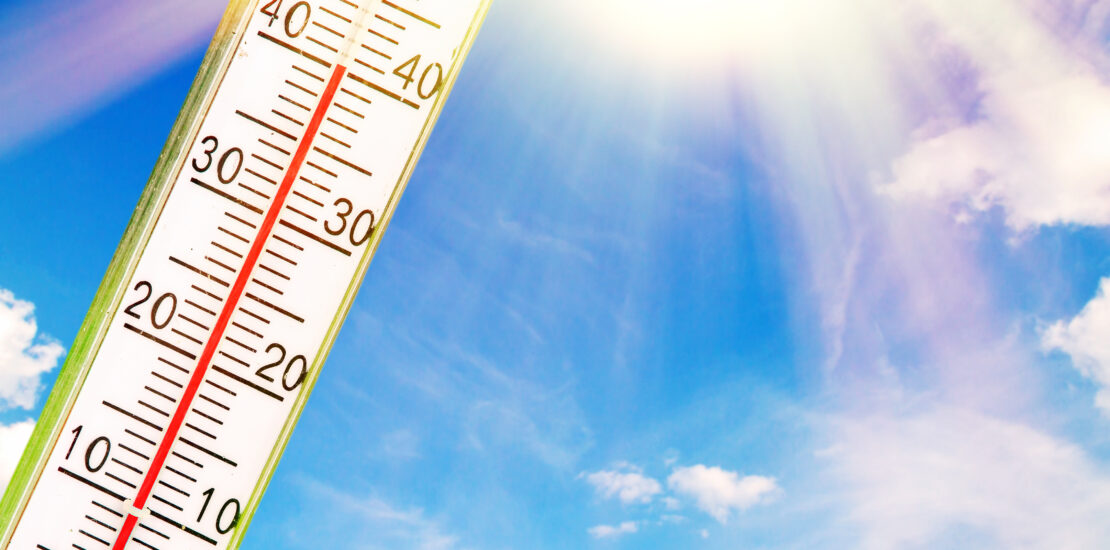Heat Stress & OSHA
- October 3, 2025
- Posted by: Meghan White
- Category: Uncategorized

Heat Stress and OSHA: What Employers Need to Know
Holly Pups, CSP, MSP
When the temperature rises, so does the risk of heat-related illnesses on the job. Whether it’s construction, manufacturing, agriculture, or working in a hot warehouse, heat stress is a real threat.
As someone who’s worked in safety and compliance for years, I’ve seen firsthand how heat can impact a crew, working indoors and outdoors. The good news? With a little planning and training, we can prevent the worst outcomes and protect our teams from serious illness… or worse.
What Federal OSHA Requires (Even Without a Heat Standard)
You might be surprised to learn that Federal OSHA doesn’t have a specific standard for heat stress. But that doesn’t mean employers are off the hook. Employers who fail to protect employees from the heat can be cited under OSHA’s General Duty Clause (Section 5(a)(1) of the OSH Act). The General Duty Clause requires employers to provide a workplace free from recognized hazards.
OSHA is paying close attention to heat-related risks and is holding employers accountable through the National Emphasis Program on Outdoor and Indoor Heat Hazards. This means more targeted inspections during warmer months.
Here’s what OSHA and many safety professionals recommend employers do:
- Write and share a heat illness prevention plan.
- Monitor the work environment for extreme temperatures and conditions.
- Train workers on preventing heat stress and recognizing symptoms.
- Ensure that workers take breaks in areas that provide adequate places to cool down and drink plenty of water/electrolytes drinks.
- Establish acclimatization protocols for new or returning workers.
- Reschedule high-exertion tasks during cooler hours of the day whenever possible.
- Know the site-specific risk factors that contribute to increased temperatures.
States That Have Their Own Heat Standards
While we wait for a federal standard to take shape, some states have already stepped up with their own rules. If you work in one of states, it’s critical to stay in compliance:
California
California’s Title 8, Section 3395 covers all outdoor work and kicks in when temperatures reach 80°F. Once temps hit 95°F, high-heat procedures (such as regular check-ins and extra breaks) are required. Employers must provide water, shade, training, and rest breaks.
Washington
Washington’s WAC 296-62-095 through WAC 296-62-09560, heat exposure rules apply from May through September and requires cool-down rest breaks, hydration, shade, and emergency planning. In 2023, they added paid rest breaks when temperatures reach 90°F. The number of breaks required increases as temperatures increase.
Oregon
Oregon OSHA’s permanent rules 437-002-0156 and 437-004-1131 went into place in 2022 and applies when temperatures exceed 80°F. It includes requirements for training, access to shade and water, and defined cool-down periods.
Minnesota
While Minnesota doesn’t have an outdoor heat stress standard, it does regulate indoor workplace environments. Rule 5205.0110 sets requirement for proper indoor ventilation and temperature controls. This is especially important for places like manufacturing operations and commercial kitchens.
New Jersey
The New Jersey legislature has introduced bills requiring the Department of Labor and Workforce Development to establish a heat protection standard for workers. Final legislation could potentially be enacted by the end of 2025.
Common Pitfalls
Employers often forget to consider how factors like acclimatization, humidity, direct sun exposure, and PPE use can significantly increase heat stress risk, even when temperatures don’t seem extreme.
Another often missed consideration is that not all employees are equally susceptible to heat stress. An employee’s personal medical conditions (such as pregnancy, heart-issues, and certain medications) can increase their risk of a heat-related condition. Workers who are trained in recognizing the signs and symptoms of heat stress can respond quickly, minimizing illnesses and save lives.
A Federal Standard May Be Coming
OSHA has been working on a federal heat stress standard since 2021, and while we don’t know exactly when it will be finalized, the direction is clear: heat safety is no longer optional.
In the meantime, we have a responsibility to protect workers from heat-related dangers.
Stay safe, stay cool, and keep looking out for each other.
If you’re looking for help building or updating your heat illness prevention program, I’m happy to share resources or talk through what a practical plan looks like for your team. I can be reached at [email protected].
